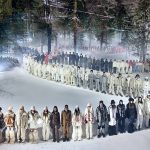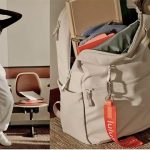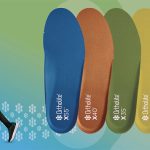According to the SnowSports Industries America (SIA) Retail Audit Report released today, the 2009/10 snow sports season is well underway and sales results from August to October were healthy, particularly in apparel and accessories.
Sales have been good during this early season. Helmet sales have been off the charts. Accessory sales as a whole have increased from last year, said Tracy Gibbons, Co-Owner of Sturtevant's, Bellevue, WA. Wider skis are continuing to make a statement and binding sales, especially with wide brakes, are following along with this trend. Kids sales are also very strong in all categories.
Quick Trends
- Fat Skis: sales increased by more than $1 million
- AT/Randonee Skis: sales up 55% to 1,900 skis
- Snowshoes sales: up 25% and headed to new record
- Insulated Apparel: cold and wet weather results in sales increases of more than $13 million
- Helmets: 25% increase in dollars sold, sales on track to hit 1 million units in 2009.10 season
- Winter Boots: fashion trends drive a 42% increase in sales
Regional Results
The Leisure Trends Group is now providing SIA members with in-depth regional data throughout the snow sports season. During August to October 2009, all regions enjoyed better sales with the significant exception in the Western region — continuing fallout from the recession is the likely culprit.
Midwestern regional apparel sales increased 26% in dollars sold as cold and wet weather dominated the fall season there. The South enjoyed strong sales and accounted for 13% of all snow sports dollars, despite a complete lack of snow.
Snow Sports Specialty, $276 million – Up 4% in units and up 4% in dollars
Alpine ski equipment sales results were flat with a 4% decrease in units sold but a 1% increase in dollars sold. Carryover dollar sales of alpine equipment fell 5% for skis, 19% for boots and 26% for bindings. Snowboard equipment sales were down 11%, while snowboard carryover sales increased 19%. Inventories in specialty shops were about 9% smaller overall compared to 2008 levels at the end of October. Inventory reduction results included a 13% reduction in alpine equipment inventory, an 8% reduction in snowboard equipment inventories, and an 8% reduction in apparel inventory units.
Internet, $164 million – Up 29% units and up 26% in dollars
The Internet channel continues to grow as consumers, who use it as a primary information source, are continuing to buy more often after they have finished their online research. In fact, sales were up 28% in units and 26% in dollars compared to August to October 2008.
Chain Stores, $80 million Up 12% in units and up 4% in dollars
Chain store sales were driven primarily by apparel and accessory sales from August through October. Chain stores sell far less equipment than specialty or online sales channels. Fewer than 10,000 of the 336,000 skis sold overall in August to October. Apparel sales increased 3%, led by carryover apparel sales that were up more than 20% compared to August through October 2008. The data indicate that chain stores discounted heavily to get customers through the doors.















